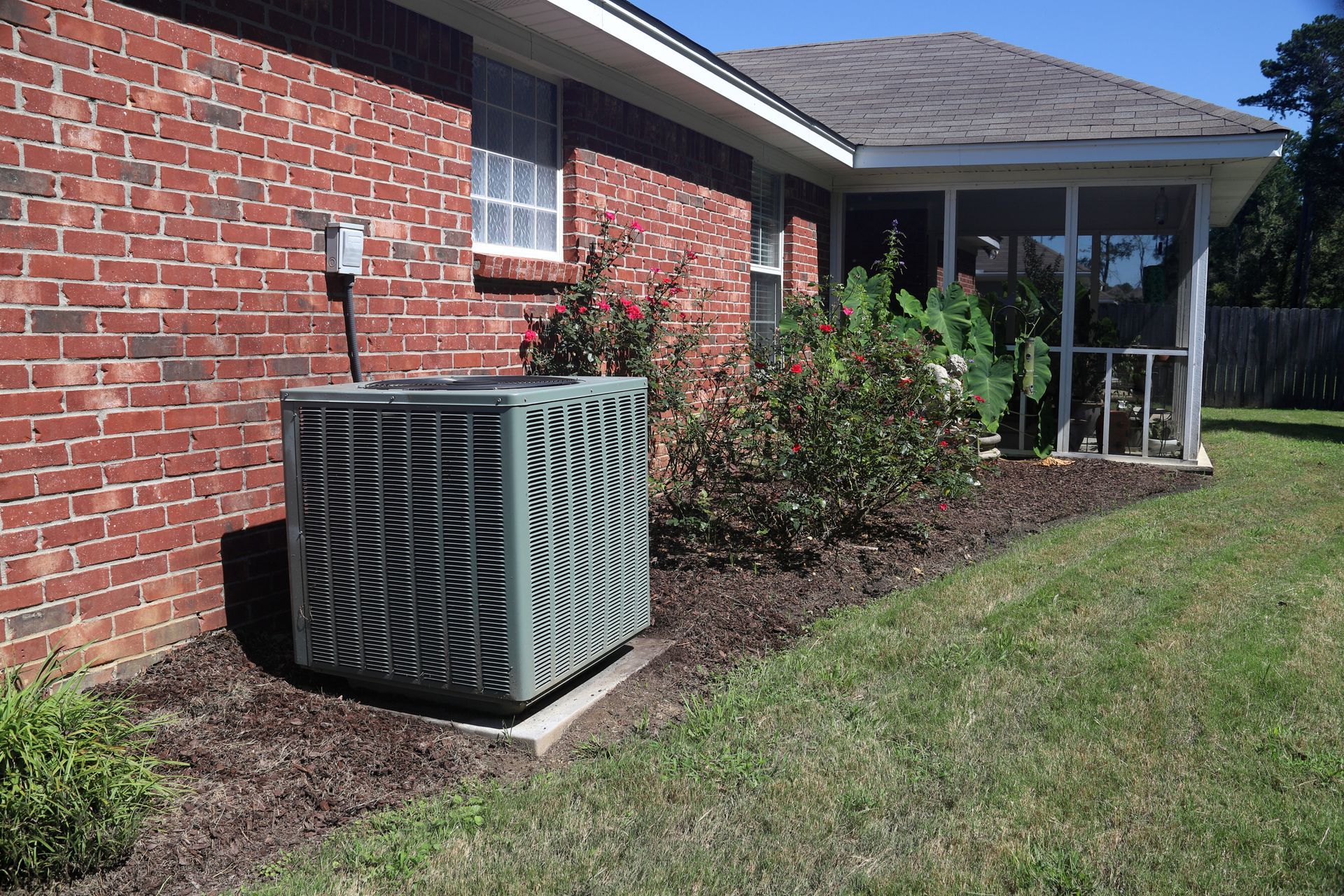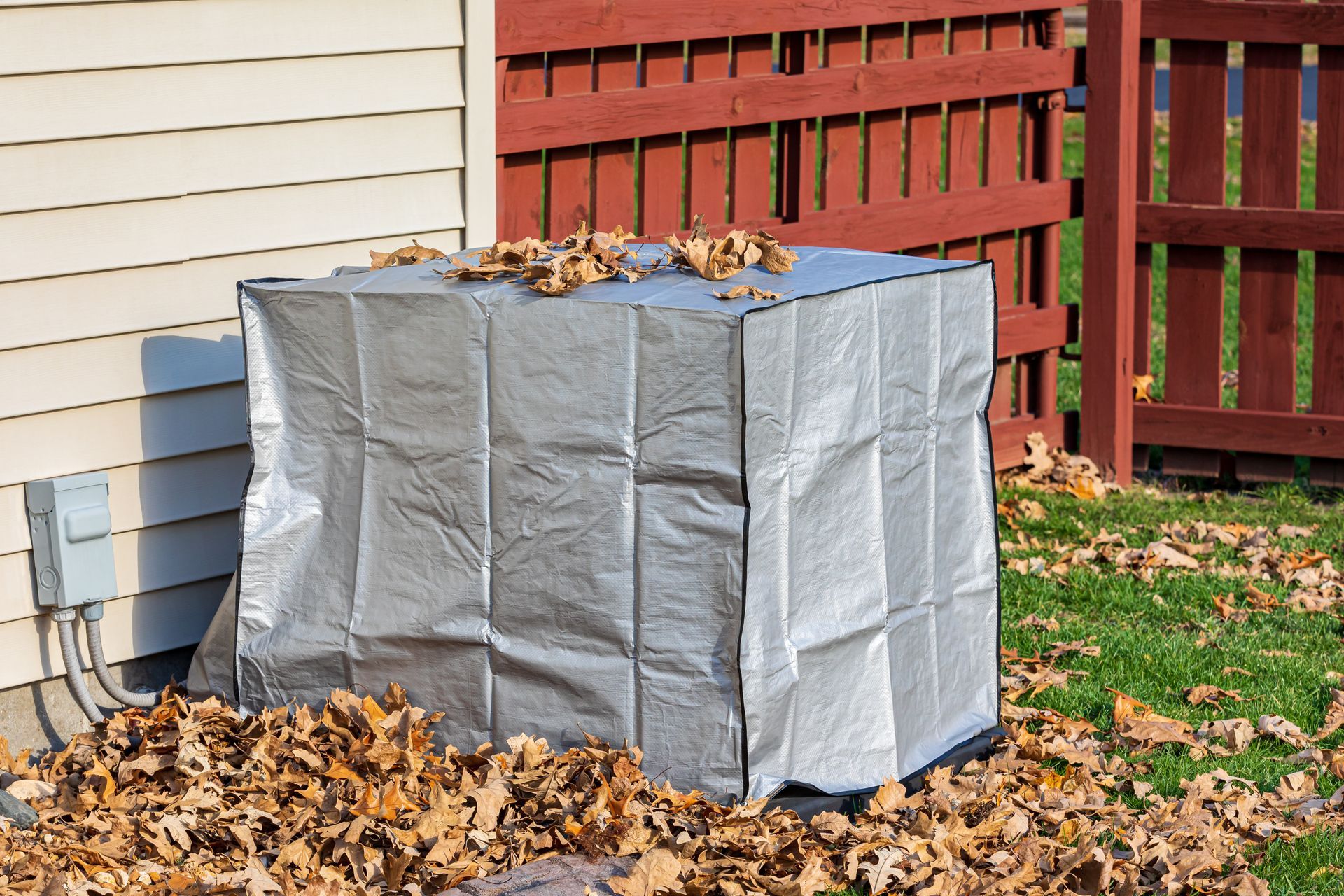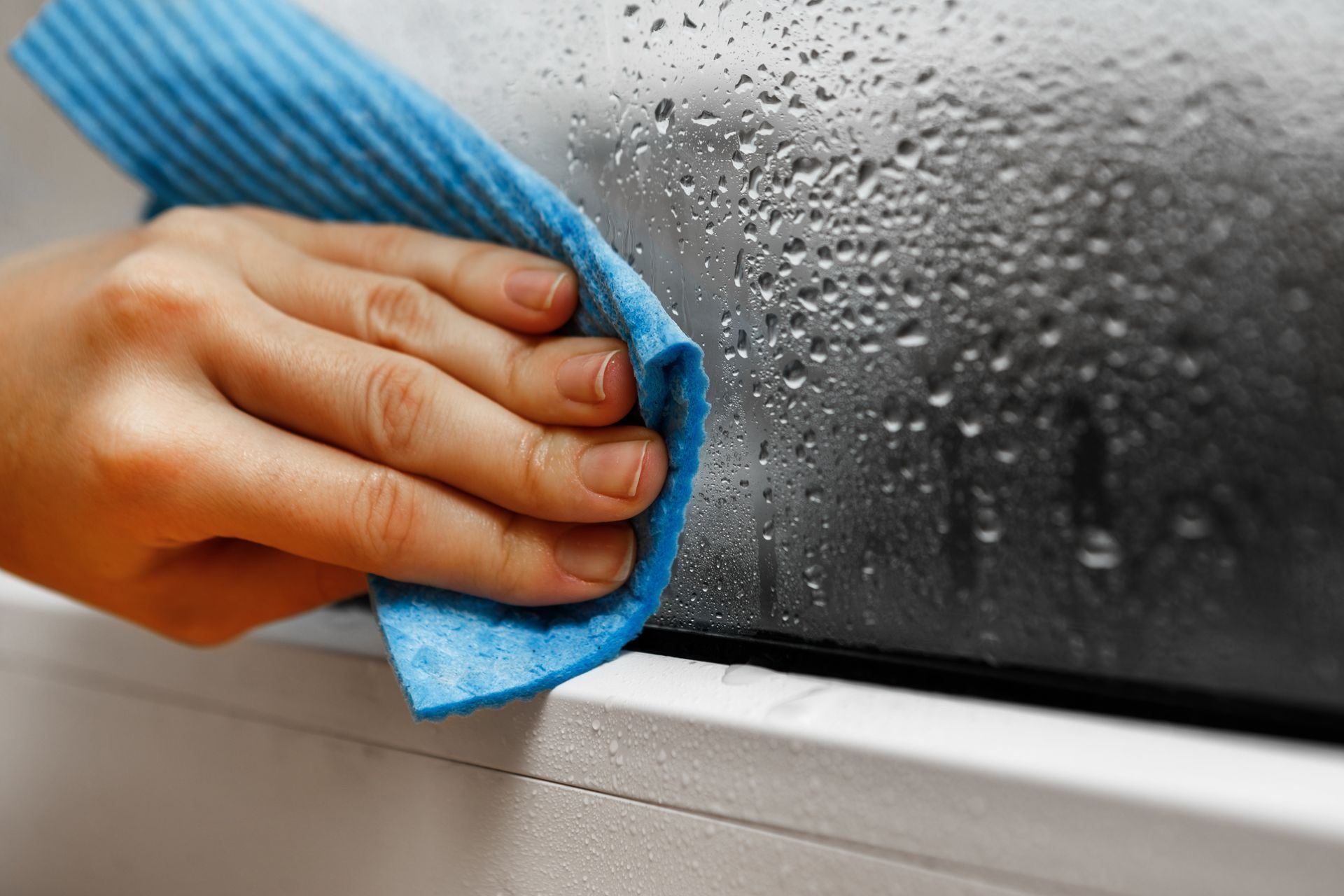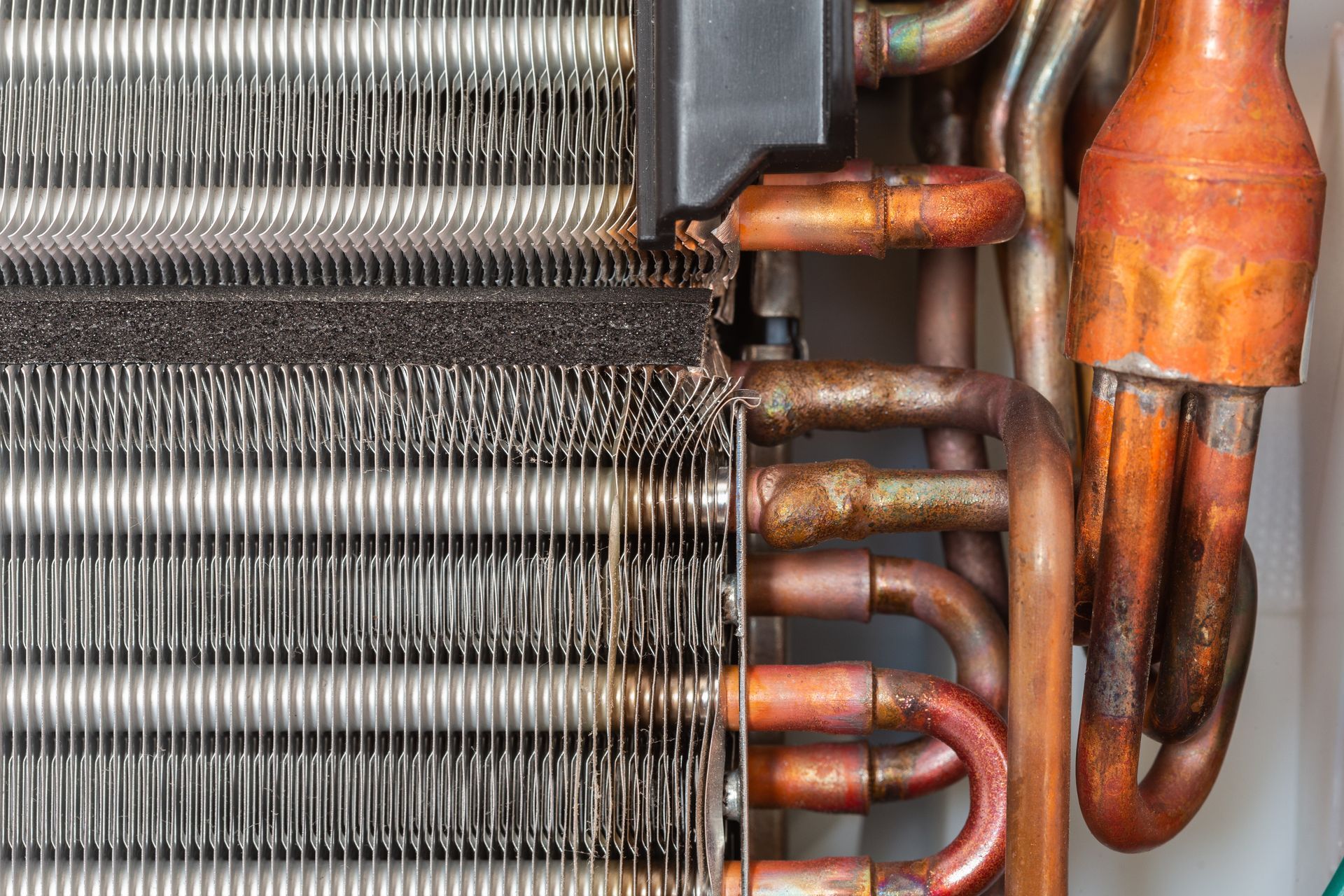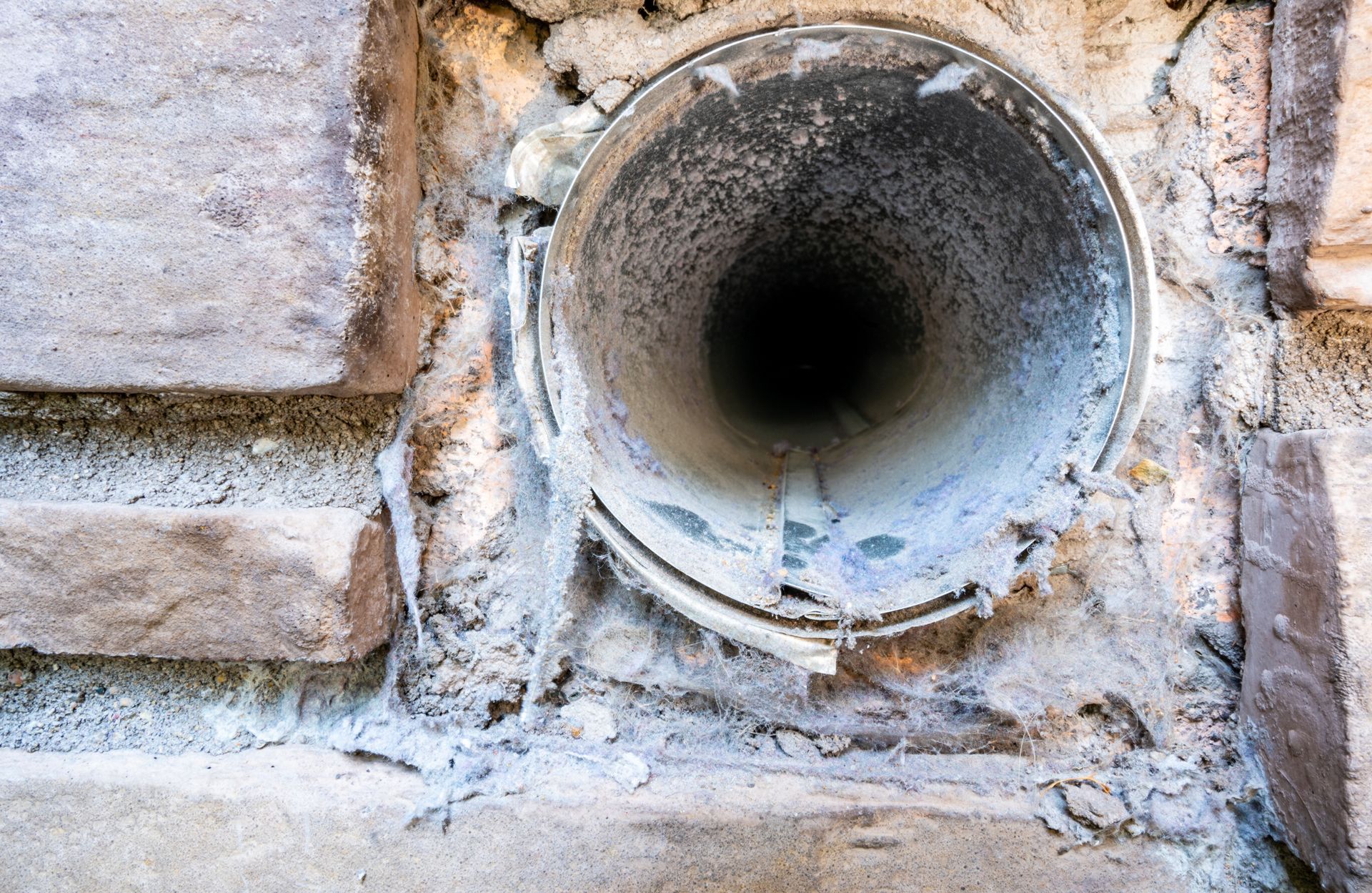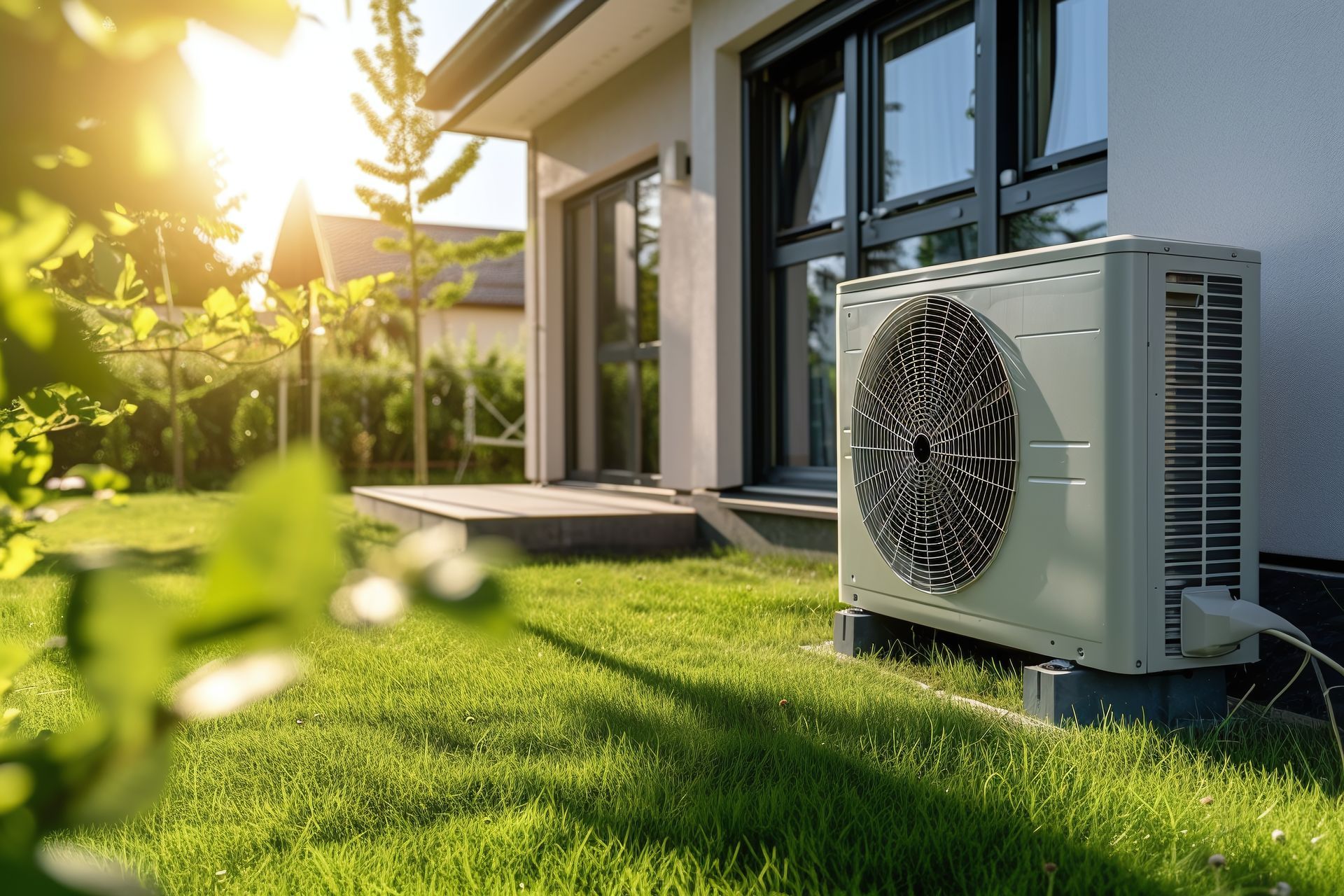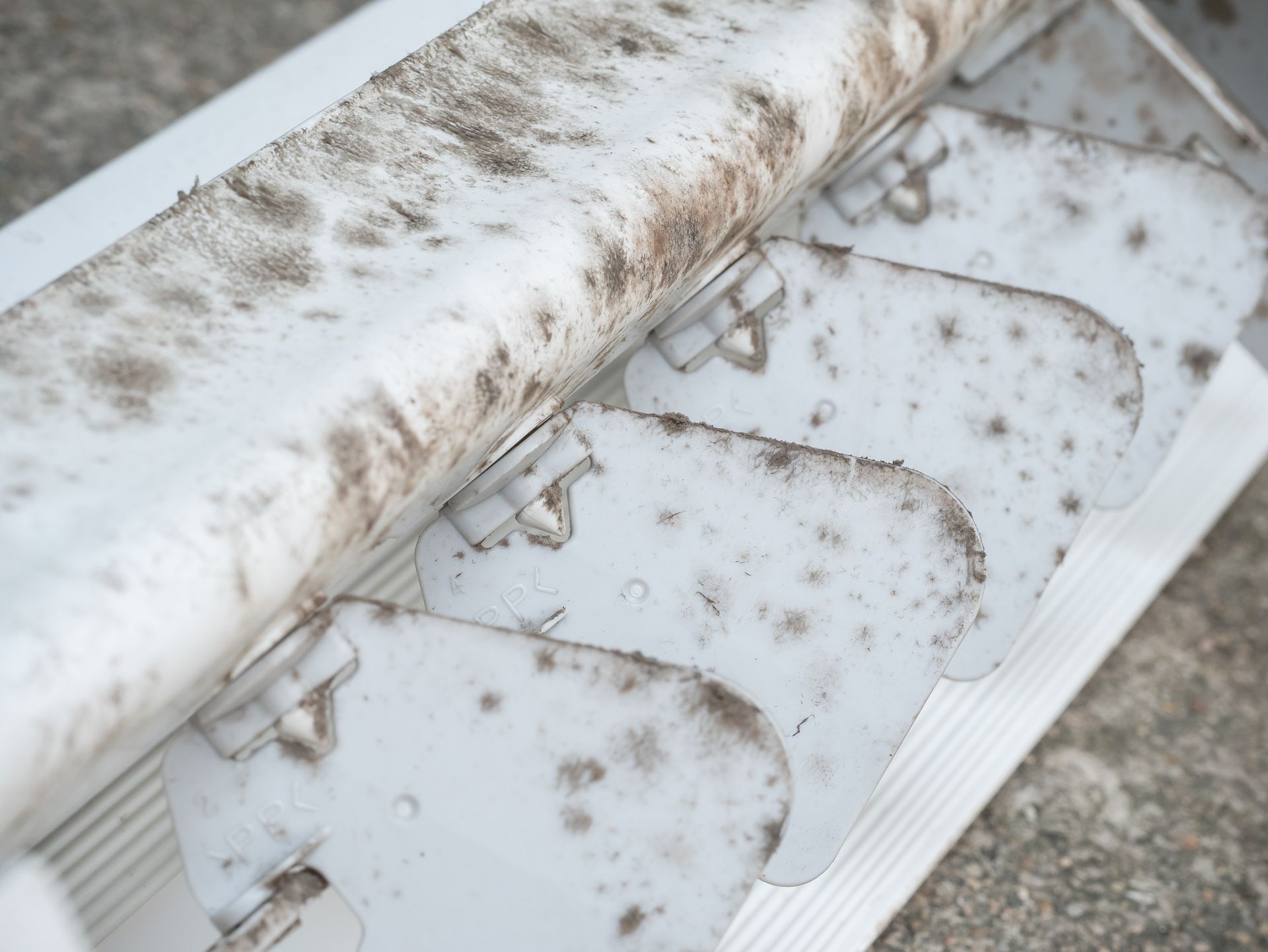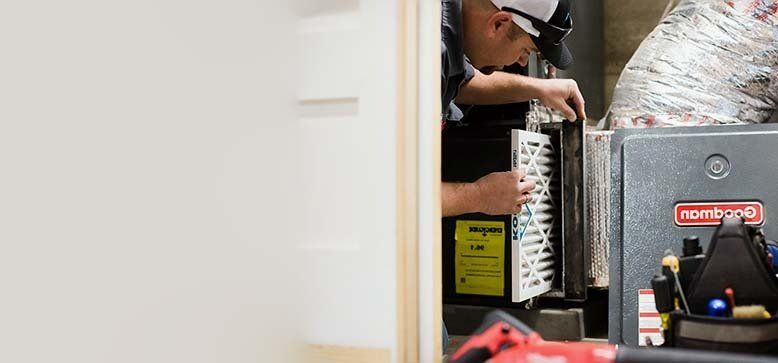What is the AC Condensate Drain Line?
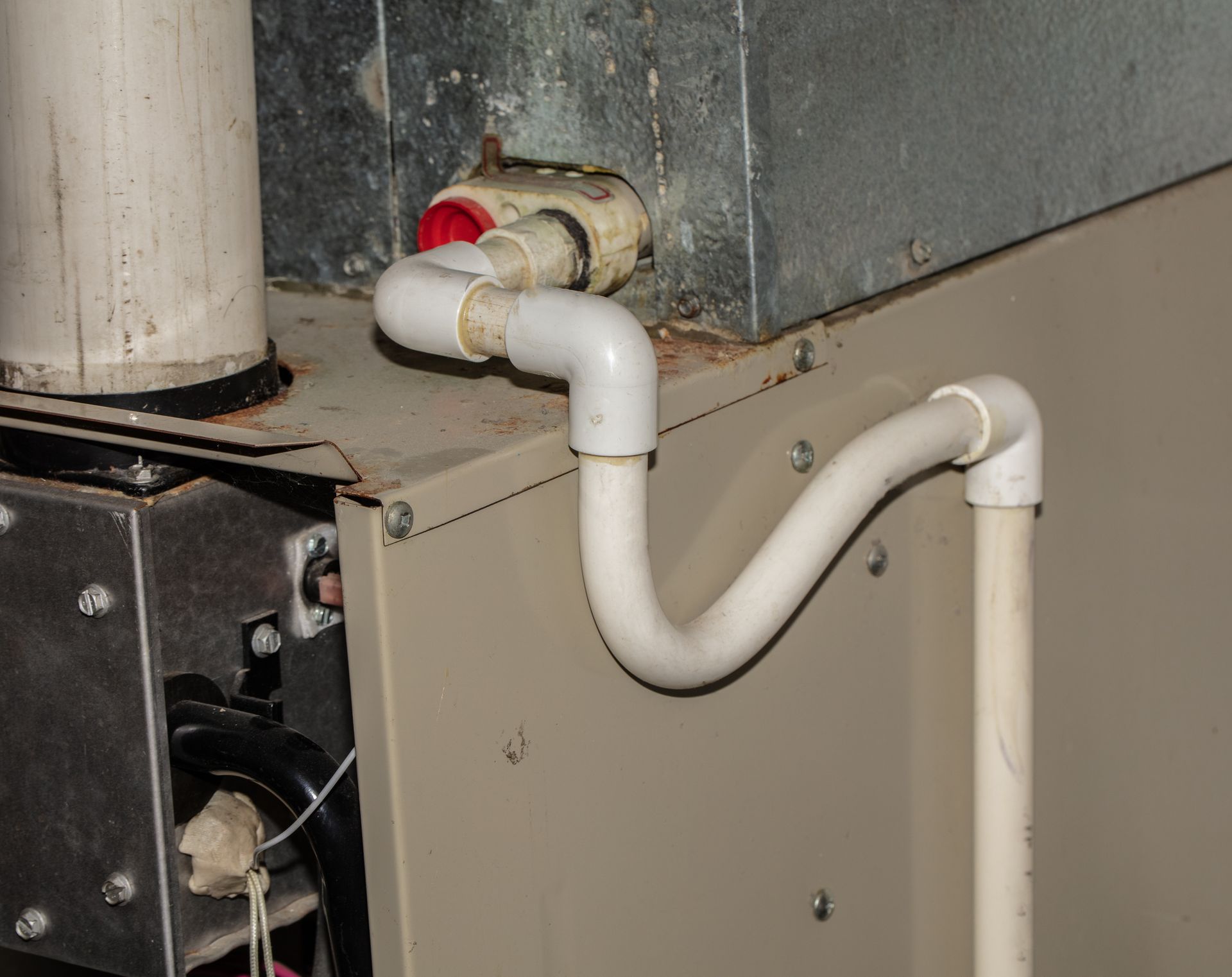
The AC condensate drain line is a crucial component of your home's air conditioning system that is responsible for managing the excess moisture produced during the cooling process. When air is cooled, humidity is generated which creates condensation that needs to be efficiently drained away to prevent water damage and maintain system efficiency. This condensation collects in a pan located under the indoor unit. From the pan, the water flows into the main condensate line which directs the excess water outside your home where you might see it dripping. If your condensate line is dripping, this indicates that the system is functioning correctly.
In addition to the primary condensate drain line, there is often a backup line. This secondary line connects to a secondary drain pan at the indoor unit and is designed to act as a safeguard in case the primary line becomes clogged or fails. This redundancy helps prevent potential water damage by providing an alternative path for the condensation to escape. Understanding the role and function of the condensate drain line is essential for maintaining the efficiency and longevity of your HVAC system as well as protecting your home from water-related issues.
What Does the Condensate Line Do?
The condensate line plays a vital role in your HVAC system by managing and removing excess moisture generated during the cooling process. As warm, moist air from inside your home passes over the cold evaporator coil, heat and moisture are extracted from the air which results in cooler, drier air circulating back into your home. This moisture collects on these coils through a process called condensation before dripping into the condensate pan. This is similar to how water droplets form on a cold glass on a hot day. The condensate line is connected to the pan and allows the water to drain outside your home.
By efficiently removing this excess moisture, the condensate line prevents potential issues like mildew, mold, and corrosion which can damage your HVAC system and shorten its lifespan. If the condensate line becomes clogged or fails, water can overflow from the drain pan and lead to significant water damage to ceilings, walls, and other parts of your home. Therefore, maintaining a clear and functional condensate line is crucial for the health of your HVAC system and the protection of your home.
Where Is the Condensate Line Found?
The condensate line typically runs from the indoor unit where the air conditioner evaporator coil is located through drain lines inside your walls and exits via a PVC pipe near the outdoor condenser unit. The only visible part of the condensate line is usually the PVC pipe that runs from your home down to the ground outside.
The exact location of the condensate line depends on the type of HVAC installation in your home. In vertical HVAC installations which are commonly found in HVAC closets or garages, the evaporator coil sits on top of the HVAC system with the condensate drain line located directly beneath it. In horizontal HVAC installations which are often used in attics due to space constraints, the evaporator coil is positioned beside the HVAC system and the condensate line is connected accordingly to drain the collected moisture.
Why Does the Horizontal Application Have a Second Drain Pan?
Horizontal applications, which are typically found in attics, include a second condensate drain pan as an additional protective measure against water damage. In these setups, the entire central air system lies on its side. This means that in the event of a condensate drain pan failure, water does not accumulate in one spot but can drip from various parts of the system. This can lead to significant damage to the ceiling, drywall, and wooden structures below. To mitigate this risk, a secondary condensate drain pan is installed beneath the entire unit which provides a safeguard similar to placing a pan under a car during an oil change to catch any spills.
This secondary condensate drain pan is equipped with its own drain line, which directs excess water to an external location. The visibility of this secondary drain line serves as a clear indicator for homeowners that if water is flowing through this line, it signifies that the primary condensate drain system has failed. When this occurs, immediate attention from an HVAC specialist is needed to prevent further damage and restore proper function to the system.
What Kind of Issues are Common with AC Condensate Lines?
Common issues with AC condensate lines include clogs from debris like dust, dirt, and algae which can lead to water overflow and potential water damage in addition to leaks from cracks or damage in the drain line or pan.
Clogged Condensate Lines
Clogged condensate lines are a common issue that can lead to significant problems in your HVAC system and home. These clogs can prevent proper drainage of the excess moisture generated by your air conditioner. As a result, water can back up and overflow from the condensate drain pan and lead to potential flooding and water damage in your home. Since the condensate line is typically hidden within walls, clogs are not always immediately apparent to homeowners. Signs of a clogged condensate line include water leaking from your ceiling or attic, stained ceilings or walls, excess humidity, moldy odors, and issues with your air conditioner shutting off unexpectedly.
What Can Cause a Clogged Condensate Drain Line?
Clogged condensate drain lines can be caused by several factors including the buildup of mold, algae, and debris. These substances can accumulate over time and obstruct the flow of water out of the condensate pan and lead to potential overflow. When the condensate pan fills up and spills over, it can cause significant issues such as short-circuiting the AC unit, rust, water damage to your home, mold growth, and wood decay. While most HVAC systems are equipped with an auxiliary drain and an emergency cut-off switch to prevent damage, regular maintenance and cleaning are essential to keep the drain line clear and functioning properly.
Damaged Condensate Drain Pan
Unfortunately, condensate drain pans can sometimes become damaged which can lead to significant issues. In the past, these pans were made of metal, which often rusted and developed holes over time due to constant exposure to water. Modern condensate drain pans are made of plastic, which is more durable and can last between five to ten years. However, these plastic pans are still susceptible to damage because they are exposed to heat during colder periods when the HVAC system is used for heating. This heat can dry out the plastic which can lead to cracks. When the air conditioning season begins, a cracked pan cannot hold water effectively which results in leaks that can pool at the bottom or seep through resulting in water damage.
Cracked Drain Line
A cracked condensate drain line is a common issue that can occur for various reasons. Prolonged exposure to direct sunlight can cause the rubber components of the drain line to dry out and crack. Age, general wear and tear, and unnecessary stress on the line can also lead to cracks. While condensate drain lines are designed to be durable and last a long time, these factors can compromise their integrity. Fortunately, repairing or replacing a cracked drain line is usually not very expensive.
Condensate Pump Problems
Condensate pump problems can arise when the pump responsible for moving water from the drain pan to the condensate drain line fails. Unlike systems that rely on gravity, many HVAC setups require a pump to siphon the collected condensation because the evaporator coil is positioned low to the ground. If the pump malfunctions, it won't provide the necessary force to move water through the drain line which can lead to potential overflow and flooding within the air conditioning cabinet. This can cause significant water damage and disrupt the efficiency of your AC system. Regular maintenance and prompt attention to any pump issues are essential to prevent these problems.
Signs of Condensate Line Issues
Signs of condensate line issues can manifest in several ways. Here are some common indicators to watch for:
- Water pooling in the drain pan: Water should not sit in the drain pan for long periods if the drainage system is working correctly.
- Flooding or puddles around the unit: Overflowing water from the pan can create puddles around your AC unit.
- Rust or water damage: Rust or other signs of water damage at the base of the air conditioner can indicate a problem with the condensate line.
- Musty or moldy odors: Unpleasant smells from your vents can result from moisture buildup due to a clogged or malfunctioning condensate line.
- AC system shutting off: If your AC system has an emergency shut-off switch, it may activate to prevent damage caused by a clogged condensate line.
What Can Happen as a Result of Condensate Line Blockage or Drain Pan Damage?
A clogged AC drain line or a damaged drain pan can lead to several serious issues including:
- Water damage to the home: Overflowing water can damage ceilings, walls, and floors.
- Microbiological growth: Standing water can promote mold and mildew which compromise indoor air quality.
- Increased humidity: Excess moisture can make your home feel uncomfortable and lead to further mold growth.
- System inefficiency: The AC unit may work harder and increase energy consumption which results in higher utility bills.
- Frequent AC shutdowns: Newer systems may have a failsafe that shuts off the AC to prevent water damage.
- Rust and corrosion: Prolonged water exposure can cause rust and lead to costly repairs or even system replacement.
- Safety hazards: Pooled water can create slip and fall risks for anyone near the unit.
Prompt attention to condensate line and drain pan issues can prevent these problems and ensure your HVAC system runs efficiently.
How to Prevent Water Damage?
To prevent water damage and fix a condensate line, follow these steps:
- Regular Inspection: Periodically check the drain pan and condensate line for signs of clogs, dirt, and debris.
- Clean the Drain Line: Use a wet dry vacuum to remove clogs from the drain line. Attach the vacuum to the exit point of the drain line and run it for a few minutes to clear blockages.
- Use Cleaning Solutions: Pour distilled vinegar or a diluted bleach solution into the drain line's access point to break down clogs. Let it sit for 30 minutes before flushing it with water.
- Routine Maintenance: Schedule regular HVAC maintenance to ensure the condensate line and drain pan are clean and functioning correctly.
- Emergency Shut-off Switch: Ensure your system has a properly installed emergency shut-off switch to prevent water damage in case of a clog.
- Professional Help: If you cannot clear the clog yourself, contact a licensed HVAC technician for assistance.
By following these preventive measures, you can maintain a clear condensate line and avoid water damage to your home.
How Often Should You Check the Condensate Drain Line?
To prevent issues with your HVAC system, it's crucial to check the condensate drain line regularly. A good practice is to inspect the drain line each time you change the air conditioner's filter which is every one to three months. Additionally, scheduling seasonal inspections by a trained HVAC technician can help identify and address potential clogs or other issues early. During these inspections, the technician will evaluate the entire system including the condensate drain line to ensure it remains clear and functional to prevent water damage and maintain system efficiency.
Contact GS Home Services if You Are Dealing with Condensate Line Problems
If you're experiencing issues with your condensate drain line or want to ensure your HVAC system is running efficiently, don't hesitate to contact GS Home Services. Our team of experienced professionals is ready to help you with any maintenance, repairs, or inspections needed to keep your system in top shape. Prevent water damage and ensure your home's comfort by scheduling a service appointment with us today. Reach out to GS Home Services for reliable, expert assistance with all your HVAC needs.
Condensate Line FAQs
How do you clear a condensate drain line?
To clear a condensate drain line, first turn off your AC unit. Then, use a shop vacuum to suction out any clogs from the drain line's exit point. Alternatively, you can pour a solution of distilled vinegar or diluted bleach into the drain line's access point and let it sit for 30 minutes before flushing it with water.
Where is the condensate drain line on my AC?
The condensate drain line typically runs from the indoor unit where the evaporator coil is located, through drain lines in your walls before exiting via a PVC pipe near the outdoor condenser unit. You can usually see the PVC pipe coming out of your home near the ground level.
What is the problem with condensate drains?
Condensate drains can become clogged with debris, mold, or algae which can result in water overflow and potential damage to your home. If not properly maintained, a blocked condensate drain can cause water damage, increased humidity, and system inefficiency.
What is the purpose of the condensate drain trap?
The condensate drain trap prevents air from entering or escaping the HVAC system through the condensate line. It also helps to ensure proper drainage of condensate by maintaining a water seal that blocks the air, allowing the system to function efficiently without pressure imbalances.


